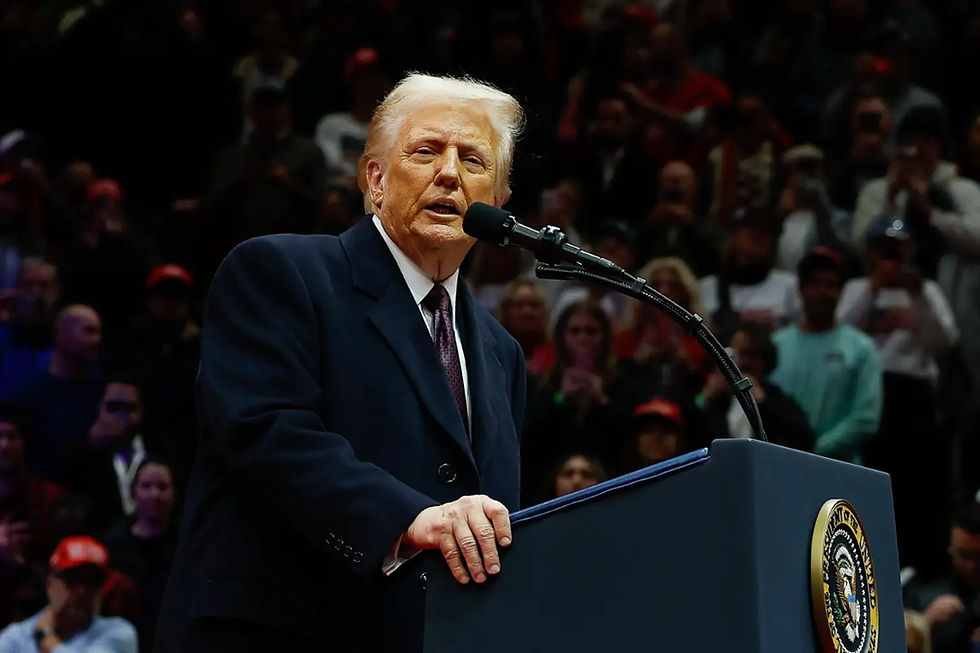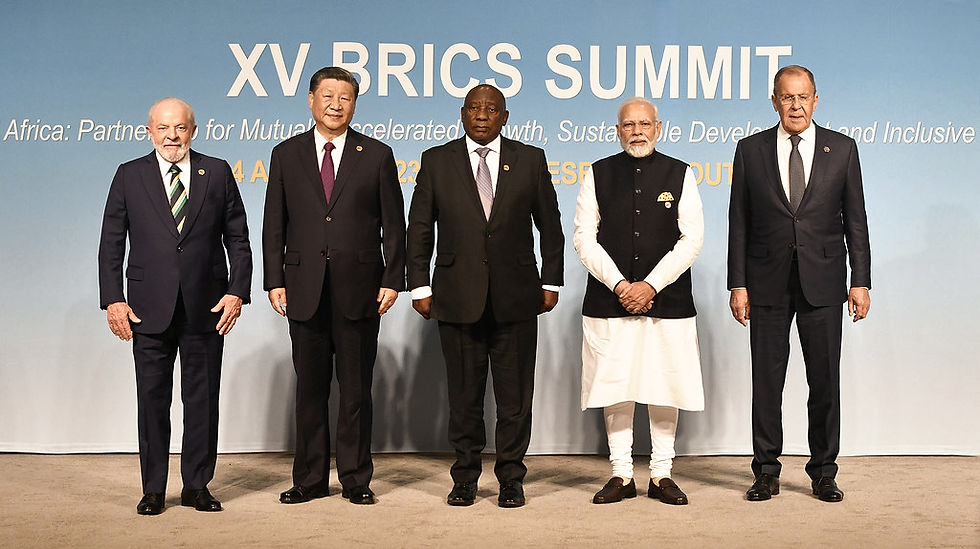US Burns Cash While BRICS Reaps The Benefits of AI
- Nicholas Shubitz

- Jan 1, 2025
- 4 min read
Updated: Jan 31
In ancient China silk was so valuable it was sometimes used as a form of currency with foreign kings and noblemen paying high prices for the cloth. The Chinese Emperor issued an imperial decree making it illegal to export silkworms or their eggs. Anyone caught trying to smuggle the insects was put to death and the science of silk making was kept a secret for hundreds of years.
Of course, silkworms were eventually smuggled out of China. One legend has it that two monks hid eggs inside a bamboo pole and smuggled them to Byzantium in the 6th century. Another tale tells of a Chinese princess who was married off to a Westerner and hid the worms in her hair.
The moral of the story is that technology is inevitably disseminated around the world and even the strictest controls prove ineffectual in the long run. In the modern world this process takes place even faster. This can be seen in the higher adoption rates of AI in BRICS countries and the rapid roll out of low-cost Chinese AI models while US platforms struggle to turn a profit.
While US firms are sinking billions into developing cutting edge AI models, emerging markets are the ones making the most of the technology. According to the Boston Consulting Group’s Global Consumer Sentiment Index, Indians are twice as likely as Americans to use ChatGPT, with other BRICS nations like the UAE, Brazil, and South Africa ranking higher than the US, UK, and Japan.
One of the most striking findings from the Boston Consulting Group’s report is the correlation between a country’s age profile and its propensity to make use of AI. Countries with younger populations, such as India, Brazil, and South Africa are taking the lead. This stands in contrast to aging populations in the West, where adoption rates are much lower despite higher levels of investment in the technology.
The implications of this trend are profound as emerging markets are not just passive consumers of Western technology. They are active participants in its evolution. For instance, Indian startups are leveraging AI to address local challenges, from healthcare to agriculture, often in ways that Western developers had not envisioned.
Brazil, for example, has been a pioneer in leveraging AI to tackle corruption in the public sector. Given the impracticality of manually reviewing all government contracts, the country developed an AI system to combat fraud in public procurement. Their AI system analyses contract data to detect suspicious transactions, excessive pricing, and conflicts of interest. After processing hundreds of thousands of procurement cases, it has saved the Brazilian government billions.
As such, while the West continues to invest heavily in AI development, there is growing evidence that the economic benefits of these new technologies will flow to the BRICS instead. OpenAI lost a whopping $5 billion last year and is still losing money on its $200 per month ‘pro’ subscription service. With new large language models from China emerging as a cost-effective competitors, the future looks bleak for US firms who had hoped to profit from the technology.
DeepSeek
The story of DeepSeek, a Chinese AI startup, illustrates how emerging markets are not only adopting AI but also innovating in ways that challenge Western dominance. DeepSeek has developed an AI model that delivers performance comparable to the best US-based models at a fraction of the cost. This achievement is particularly remarkable given the constraints imposed on the developers by US sanctions.
DeepSeek’s success is a testament to the ingenuity of Chinese scientists, who have optimized the algorithms and communication frameworks to extract maximum performance from limited hardware. By some estimates DeepSeek is able to match or even surpass well-known US based models like ChatGPT and Gemini with less than one 10th of the computing power. This has led to significantly lower build out and operating costs.
The end result is that while OpenAI has raised $6.6 billion in funding and ChatGPT-5 could cost as much as $2.5 billion to train, the latest version of DeepSeek was created on a budget of less than $6 million. DeepSeek’s Mixture-of-Experts protocol is also more efficient, making it 30 times cheaper to run. This is a potential nightmare for the Nasdaq that keeps getting scarier.
Tik Tok owner, ByteDance recently unveiled its own Doubao-1.5-pro model priced at just 2 yuan per million tokens, which is even cheaper. ByteDance is known for its optimized server clusters and network technology, which allows them to reduce hardware costs and lower prices. This will likely lead to increased global adoption of Chinese AI models to the chagrin of US investors.
The implications of these breakthroughs are far-reaching. As emerging markets produce high-quality AI models at significantly lower costs, this undermines the profitability of Western tech giants that have invested billions in the technology. This shift could also lead to a more decentralized AI ecosystem, with innovation hubs emerging in developing countries usually thought of as peripheral to the global tech landscape.
Historically, countries with lower levels of productivity have always closed the gap on countries with higher levels of productivity because they simply have more productive potential to unlock. The same trend is taking place at an accelerated pace in the field of AI.
Countries with higher wages also have a stronger incentive to replace workers. This could lead to a reduction in consumption and economic activity in rich countries without materially improving citizen’s quality of life. This scenario is easy enough to imagine for anyone who has had to deal with a chat-bot instead of real person when contact a service provider.
In contrast, poorer countries could experience higher growth rates as AI technology improves educational outcomes and increases agricultural and manufacturing output. This could lead to a narrowing of the global wealth gap, with AI ultimately serving as a levelling force rather than an excuse for irrational exuberance in tech stocks.
As AI continues to evolve, it is becoming increasingly clear that its future will be shaped by a global ecosystem of innovation. While the US may have taken an early lead, the BRICS have already overtaken the West, and emerging markets are poised to play an increasingly important role in adopting and adapting this technology.




Comments